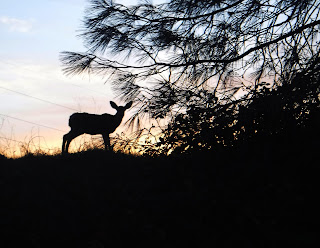 |
| Walden Pond 1908 |
I've never been there, but have been there hundreds of times. Naturalist and philosopher, Henry David Thoreau's made his beloved Walden Pond, "a perennial spring in the midst of pine and oak woods," near Concord, Massachusetts, come alive to millions of who have never seen it either in his best-known work, “Walden; or, Life in the Woods.” The pond has become a symbol of to most environmentalists as living simply in the harmony of nature.
 |
| Henry David Thoreau |
An early recreational hiker and canoeist Thoreau was an advocate for conserving natural resources on private land, and of preserving wilderness in public land. He would influence generations of naturalists and environmentalists such as the likes of John Burroughs and John Muir.
Recounting the two years, two months, and two days he spent at Walden Pond in 1854, Thoreau recorded a virtual Eden with phrases describing the pond's divine purity, beauty and solitude.
 The scenery of Walden is on a humble scale, and, though very beautiful, does not approach to grandeur, nor can it much concern one who has not long frequented it or lived by its shore; yet this pond is so remarkable for its depth and purity as to merit a particular description.
The scenery of Walden is on a humble scale, and, though very beautiful, does not approach to grandeur, nor can it much concern one who has not long frequented it or lived by its shore; yet this pond is so remarkable for its depth and purity as to merit a particular description. This water is of such crystalline purity that the body of the bather appears of an alabaster whiteness...
The water is so transparent that the bottom can easily be discerned at the depth of twenty-five to thirty feet. Paddling over it, you may see, many feet beneath the surface, the schools of perch and shiners, perhaps only an inch long, yet the former easily distinguished by their transverse bars...
So it's surprising to hear that Walden Pond, the famed pristine jewel of that inspired Thoreau's environmentalism is being polluted.
At first glance, I wish it were some evil corporation dumping tainted sludge into the water or the weak efforts of EPA letting off the perpetrators, but it not. According to a new study, Walden Pond heavily used recreational venue has been befouled by years of swimmers, anglers, and visitors urinating in the water.
“These findings suggest that, although mitigation efforts have curtailed anthropogenic nutrient inputs to Walden Pond, the lake has not returned to the pre-impact condition described by Henry David Thoreau and may become increasingly vulnerable to further changes in water quality in a warmer and possibly wetter future,” Dr. Jay Curt Stager, a researcher at Paul Smith’s College in the Adirondacks, and his co-authors warned.
The study concluded the pond’s levels of nitrogen and phosphorus, which are found in human waste, has yielded an endless food supply for algae, creating a wrecking-ball to the ecosystem since the 1920s. The growing algae has spread out across the water blocking the rays of the sun, which of course the fish need to survive and threatening to turn one of America's most iconic lakes into a slimy, scummy mess.
"During the early 20th century, water clarity [in Walden Pond] declined significantly due to a combination of factors, including shoreline development and inputs of human wastes," the report stated, "More than half of the summer phosphorus budget of the lake may now be attributable to urine released by swimmers."
 |
| Lake Natoma |
The Central Valley Regional Water Quality Control Board also reported elevated E. coli levels in the lower American River in 2015 and 2016, with the highest concentrations near downtown Sacramento.
“It should give people some discomfort about using the water – it’s not good,” said Ron Stork of Friends of the River told the Sacramento Bee.
The bottom line is, despite some of our best efforts to clean our nation's waterways, they are nowhere near as pure as were when Thoreau dipped his toes into Walden Pond. It's easy to blame others, but it's all of us. Our country's most popular destinations that see a heavy volume of visitors, can have a devastating effect on our rivers and lakes' ecosystems. While garbage and trash are an easy to spot eyesore, the hidden pollution, AKA peeing in the pool, can over time, as we can see, be just as detrimental to the environment
 |
| American River |
Dispose of Waste Properly
So this Earth Day 2018 weekend let's take action to protect our waterways like Walden Pond. As Thoreau states in“Walden; or, Life in the Woods,” our lakes, ponds and rivers are our treasure for the future generations to enjoy- Pack it in, pack it out. Inspect your campsite and rest areas for trash or spilled foods. Pack out all trash, leftover food and litter.
- Deposit solid human waste in catholes dug 6 to 8 inches deep, at least 200 feet from water, camp and trails. Cover and disguise the cathole when finished.
- Pack out toilet paper and hygiene products.
- To wash yourself or your dishes, carry water 200 feet away from streams or lakes and use small amounts of biodegradable soap. Scatter strained dishwater.
White Pond and Walden are great crystals on the surface of the earth, Lakes of Light. If they were permanently congealed, and small enough to be clutched, they would, perchance, be carried off by slaves, like precious stones, to adorn the heads of emperors, but being liquid, and ample, and secured to us and our successors forever...




























